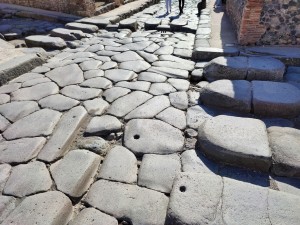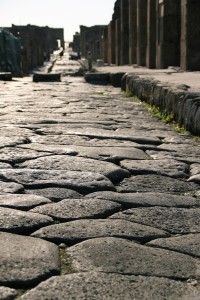by Kleiton
Share
Share

A Brief History of Paver Stones
The Inception of Paver Stones
Paving stones have been around for centuries, dating back to the days of Ancient Rome. The Roman army, frustrated with muddy and cumbersome roads, devised a more efficient method of transportation using paving stones. They created deep roadbeds of crushed stone for proper drainage and placed six-sided paving stones on heavily traveled routes. This resulted in a sophisticated network of roads connecting cities, towns, and military bases. At its peak, the Roman empire had over 250,000 miles of roads, with 50,000 miles paved with stones.

Pompeii, Campania, Italy – October 14, 2021: Interior of the Pompeii Archaeological Park
Some Paver Stones Laid in Rome Still Remain
These roads were so well-designed and constructed that many are still in use today, thousands of years after they were first built. One of the most famous Roman roads that still exists today is the Appian Way, which stretched over 310 miles from Rome to the port of Brindisi.

South Decumanus Colonnaded Roman Street in Ancient Gerasa, Jerash, Jordan with Corinthian Columns
Paver Stones Spread and Gain Popularity
The use of paving stones continued throughout Europe, but it wasn’t until the 1950s that concrete units began to be produced. Following WWII, the Netherlands started manufacturing dimensionally consistent, hand-sized concrete units to replace clay brick streets damaged by the war. In the 1960s, Germany developed high-efficiency machinery for the production of interlocking concrete pavers, and the technology quickly spread throughout Europe, as well as Australia, New Zealand, and South Africa.
Paver Stones Make it to North America
In the 1970s, the popularity of paving stones reached Canada and the United States, and the paver industry boomed. According to the ICPI, it grew from 80 million square feet in 1980 to 755 million square feet in 2005. Today, paving stones are a very popular choice for outdoor spaces, as they are beautiful, natural, durable, and an affordable way to add style and class.

The streets of the ancient roman city of Pompeii, destroyed by a volcanic eruption
If you’re interested in learning more about bringing this time-honored tradition to your own property, click the link on our website to schedule a free consultation!
